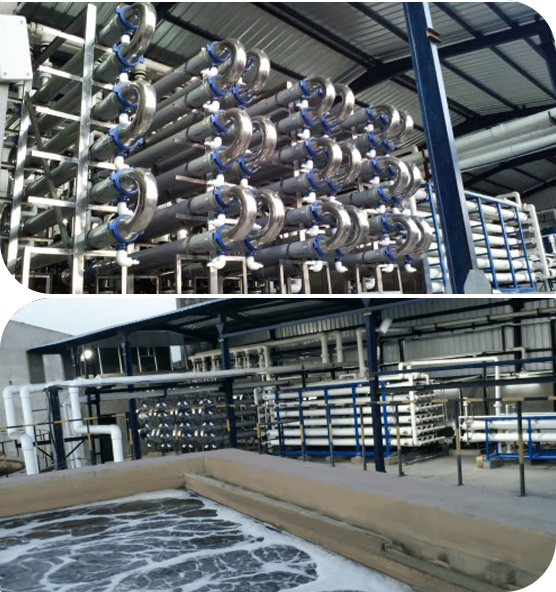
Waterman Engineers Australia is probably the leading companies of Zero Liquid Discharge technique. A ZLD technique is often a procedure system which is used to eliminate all the liquid squander from a program. The aim of ZLD water treatment is to lower wastewater economically and develop potable drinking water which is match for normal use. Zero discharge procedure is a sophisticated remedy technique that comprises ultrafiltration, reverse osmosis, evaporation and fractional electro deionization. And we've been a properly-identified provider of ZLD programs.
In many Industries, for instance electricity, oil & fuel, chemical compounds, mining and Other people, a great deal of wastewater is generated that needs to be managed. Conventionally, this discharge of wastewater is done by way of a plant outfall to the surface area h2o human body like an evaporation pond, or occasionally deep properly injected. These practices bring about lots of environmental considerations by the general public in many regions of the earth, as water can be a scarce resource and its administration needs to be monitored. These problems have resulted within the establishment of ZLD processes by quite a few industries to reduce their environmental footprint and improve sustainability. And, Waterman Engineers Australia are ideal ZLD suppliers you can find for this system.
Homes OF ZERO LIQUID DISCHARGE Process
The Attributes of the Zero Liquid Discharge system may vary dependant upon the specific style and engineering utilised. On the other hand, some popular Attributes of ZLD units include:
H2o Conservation: One of the first targets of ZLD devices will be to preserve water by reducing the discharge of liquid squander to the setting.
Large Water Purity: ZLD systems are meant to develop substantial-good quality water that is no cost from impurities and contaminants, which makes them suitable for use in several industrial processes.
Flexibility: ZLD techniques tend to be built to accommodate a wide variety of input liquid streams, which makes them versatile and suited to use in different industries.
Highly developed Wastewater Treatment method: Zero liquid discharge systems use State-of-the-art wastewater remedy techniques to eliminate impurities and contaminants with the effluent, creating higher-excellent water.
Waste Reduction: ZLD programs help lessen squander by reducing the amount of liquid waste that should be disposed of and by developing a concentrated, sound squander substance that can be securely disposed of.
Strength Performance: ZLD systems may be Strength-intense mainly because of the high Vitality demands of evaporation and various wastewater treatment procedures. However, innovations in engineering are making Zero liquid discharge units far more Power-effective and cost-efficient.
Waterman Engineers Australia manufactures Zero Liquid Discharge (ZLD) methods made to eliminate all liquid squander, aiming to generate potable drinking water and lessen environmental effect. Their ZLD techniques usually consist of ultrafiltration, reverse osmosis, evaporation, and fractional electro deionization. Key systems utilised are Falling Zld System Manufacturer Zero Liquid Discharge System Movie Brine Concentrators, Forced Circulation Crystallizer, and Other people, with a two-action technique of pre-focus and evaporation/crystallization to Get well and reuse water. These devices are adaptable to diverse industries, emphasizing water conservation, significant water purity, squander reduction, and Power performance. Specialized technical specs are different and customizable, contemplating things like water supply, flow amount, and feed water good quality.
The necessity for Zero Liquid Discharge (ZLD) techniques occurs in the necessity to deal with environmental issues relevant to water scarcity and pollution. In industries like electric power, oil & fuel, and mining, large quantities of wastewater are created. Historically, this wastewater is discharged into bodies of drinking water, resulting in air pollution and depleting clean drinking water methods. ZLD methods aim to minimize these impacts by treating and recycling wastewater in the economic process, thereby conserving water, lowering waste, and promoting sustainability.
When contemplating the complex requirements of the Zero Liquid Discharge (ZLD) process, vital aspects to focus on consist of the water source it'll treat, the method's movement price, the quality of feed h2o, the levels of cure included, the recovery price of water, methods for focus disposal, elements of development, working circumstances, and system automation and control. These things make sure the method's success, longevity, and effectiveness in treating and recycling industrial wastewater.
Zero Liquid Discharge (ZLD) vegetation supply Advantages such as drinking water conservation, squander reduction, and air pollution prevention, contributing to environmental sustainability. They're applicable in industries like electric power generation, oil and fuel, chemical compounds, and mining, wherever they assist in managing industrial wastewater properly, decreasing the ecological footprint, and complying with stringent environmental laws. These techniques are very important in spots struggling with water scarcity and for industries aiming to boost their sustainability and operational efficiency.
FAQs for your Zero Liquid Discharge (ZLD) technique frequently tackle its operational concepts, Expense-performance, maintenance demands, environmental impression, applicability throughout several industries, and regulatory compliance. These concerns support users recognize the system's Rewards, complex requires, and suitability for their precise wastewater administration requirements.
1. Zero Liquid Discharge (ZLD) is actually a wastewater treatment approach meant to eradicate all liquid squander.
2. The technique's parts are motivated by the particular industrial approach, wastewater composition, and regulatory necessities.
three. Effluent cure vegetation take away pollutants from textile effluents to forestall environmental contamination.
four. Pros involve water conservation, air pollution reduction, and regulatory compliance.
5. The purpose is to reduce environmental effects by recycling water and lowering waste.
6-nine. Effluent remedy plants are levels in wastewater procedure: Key (Bodily separation), secondary (biological procedure), and tertiary (Highly developed cure).
10. Device operations consist of filtration, sedimentation, Organic treatment method, and disinfection.
11. Restricting parameters are aspects that affect the therapy's efficiency, like pH and contaminant focus.
12. Style concerns include things like circulation charge, effluent composition, and desired quality of dealt with h2o.